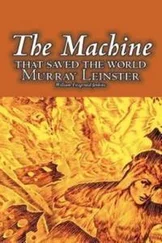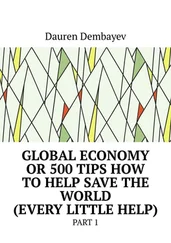Although in Ancient Rome it was often the responsibility of the household slave to teach the parrot to talk, professional parrot teachers offered a service too. Presumably this skilled job would have been well paid and highly regarded. Certainly the best modern-day animal trainers who teach animals to perform in zoos and for film and television shows can earn a good living. But being trained by a professional teacher to be a good talker didn’t guarantee a long and comfortable life in captivity. The tongues of talking parrots were eaten as a cure for speech impediments.
Later on, parrots like African Greys that could talk very well were revered in Europe. It was believed by the Roman Church that these birds’ ability to speak elevated them in the hierarchy of creation. A parrot belonging to a Venetian Cardinal undoubtedly reinforced this impression; his bird could faultlessly repeat the Lord’s Prayer. Although today we use the phrase ‘parrot fashion’ as a derogatory figure of speech to denote unthinking repetition, modern science has recently suggested that the medieval Church might in fact have had a point. It seems that parrots don’t simply copy: they use words to communicate specific meanings.
One famous African Grey Parrot called Alex has worked for years with American psychologist Irene Pepperberg. Alex has been intensively trained under laboratory conditions to use sounds in relation to their meaning and as a form of communication with people. Alex has demonstrated an ability to use words to describe dozens of objects, colours and materials and uses commands such as ‘come here’ or ‘I want’. Alex has also begun to communicate with words that he has not been taught but overheard and put into the correct context. He also picked up the idea of ‘no’ – a conceptual breakthrough. He would say ‘no’ to his keepers when he wanted to be left alone. Although a long way from being able to hold conversations, Alex does interact with people via human speech.
Pepperberg’s work suggests that parrots, like people, are biologically primed to learn, socialise and communicate. It seems that in common with human children, parrots need to learn from their peers and elders which sounds are significant and worth remembering. The fact that this kind of social learning goes on in the wild is demonstrated by the fact that different flocks of parrots develop their own ‘dialects’. These ‘language’ differences have emerged in studies of geographically isolated populations of parrots and show how their use of sound is not instinctive but learned and cultural. In captivity, where the parrot’s normal feathered companions are instead replaced by human ‘flock members’, the significant sounds are the ones ‘taught’ by people or which seem to elicit a strong response from their human companions. Since the sound of a telephone or the beep of a microwave oven sends the owner (flock member) running to them, these sounds acquire importance and the parrot will therefore reproduce them. 11
Alex’s achievements in mastering aspects of human communication are quite staggering. It is worth considering that while parrots have learned our language, we humans have so far failed to communicate with these birds in the whistles, squeaks and squawks that comprise their native tongues. It is also worth dwelling for a moment on the question of who is mimicking whom. The next time a parrot says ‘hello’ and you return the greeting, remind yourself who said it first. There is every impression that some parrots seek attention by talking to people. They use the words that experience has shown them will get a response. The bird says ‘hello’, the human responds. Following this most human-like introduction, the bird acquires the social contact, attention and stimulation it craves. Most people can identify with that.
Despite parrots’ legendary ability to talk, it is remarkable how little is understood of their use of sound in the wild. It was not until 1993, for example, that there was firm evidence of vocal mimicry of wild African Grey Parrots. 12 What does seem ever clearer, however, is that their sophisticated use of sounds is more than simply an ability to duplicate. It appears to be a reflection of these birds’ capacity to process and exchange information and is linked to their behavioural and mental flexibility.
One reason parrots need such mental abilities is because, like people, they are social animals. Their brains and instincts are those of creatures that interact at an individual level. Most species live in flocks, at least outside the breeding season. Throughout the year and especially when they are nesting, individual parrots maintain a strong bond with their partner. What goes on in their minds, what emotional dimension there is to the bond between pairs of birds, we can only guess at. Like people, however, it seems that the attachment between a pair goes very deep. Where ‘love’ meets instinct we cannot know, but considering the intelligence of parrots we should not rule out the possibility that an emotional state comparable to that found in humans might bind pairs of these birds together.
Many species pair for life and will only change partners if theirs dies. The pair bond is reinforced by various behaviours including mutual preening and feeding. This aspect of their make-up explains why in most species males and females are similar in size and colour. Sexual dimorphism is most marked in mammals and birds where the males are polygamous and compete with one another for the attentions of several females. In monogamous breeding systems the need to show off with bright plumes and displays is less necessary and for that reason (in the majority of parrots) the sexes look alike. A close bond has great value. Birds that have bred together generally get better at it as time goes by. Rather like first-time human parents, new pairs of parrots can get into difficulties while older and more experienced birds appear to cope much better. Some species might also benefit from a close monogamous relationship in being instantly ready to breed when conditions permit. Many parrots have no defined nesting season and begin their breeding cycle when conditions are suitable; some of the Australian grass parakeets are notable in this respect. The budgerigar for example quickly nests after unpredictable rains, when it lays up to eight eggs. The birds wander in search of areas where rain has fallen and are triggered into breeding condition when such an area is located. The chicks mature fast and leave the nest after only a month. The establishment of a year-round monogamous pair bond is an advantage under these conditions as it saves time when the unpredictable rains fall. The search for a partner and the formalities of courtship are dispensed with and any possible delay in the birds’ ability to make the most of abundant food to feed their chicks is avoided. Again, an advantage that many people will identify with.
Even when the birds are forced to be less sociable and to spread out to take advantage of widely scattered nesting sites or food sources, in most species of parrot the family group forms a tight social unit. When the young fledge from the nest they fly with their parents to learn the feeding techniques and skills of vigilance and predator recognition and avoidance they will need to survive.
In their various levels of social organisation, there are hierarchies, peer groups, families and breeding partners. To cope with such a complex social environment parrots must recognise individuals and know their place in the social order. That in turn requires memory, an ability to learn and to communicate. And such abilities are of premium value to creatures that live a long time. The longer they live, the more they can learn. Longer-lived birds can pass on more information and wisdom to their offspring, thereby improving the young birds’ chances of survival in the unforgiving world of the forest.
Читать дальше












